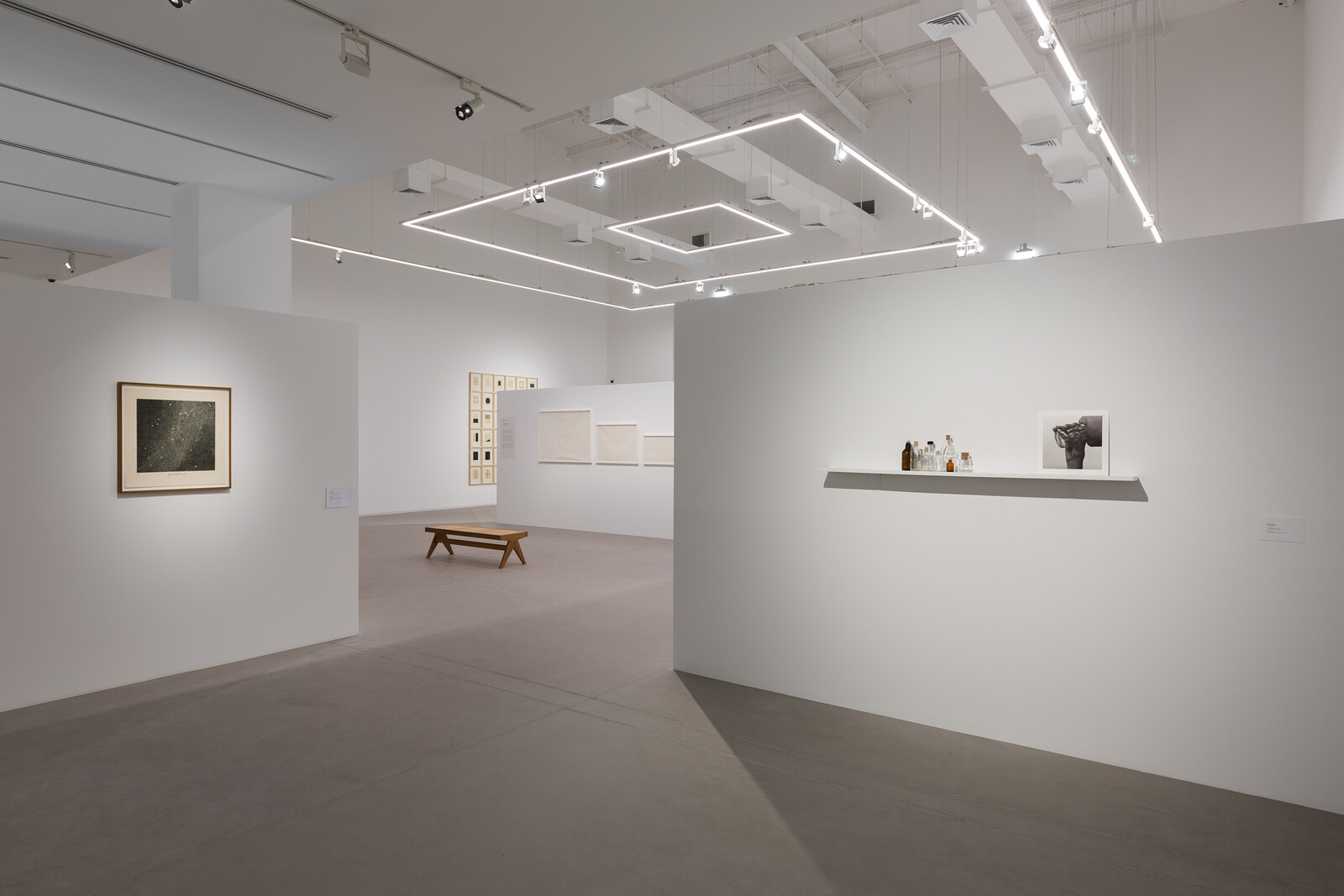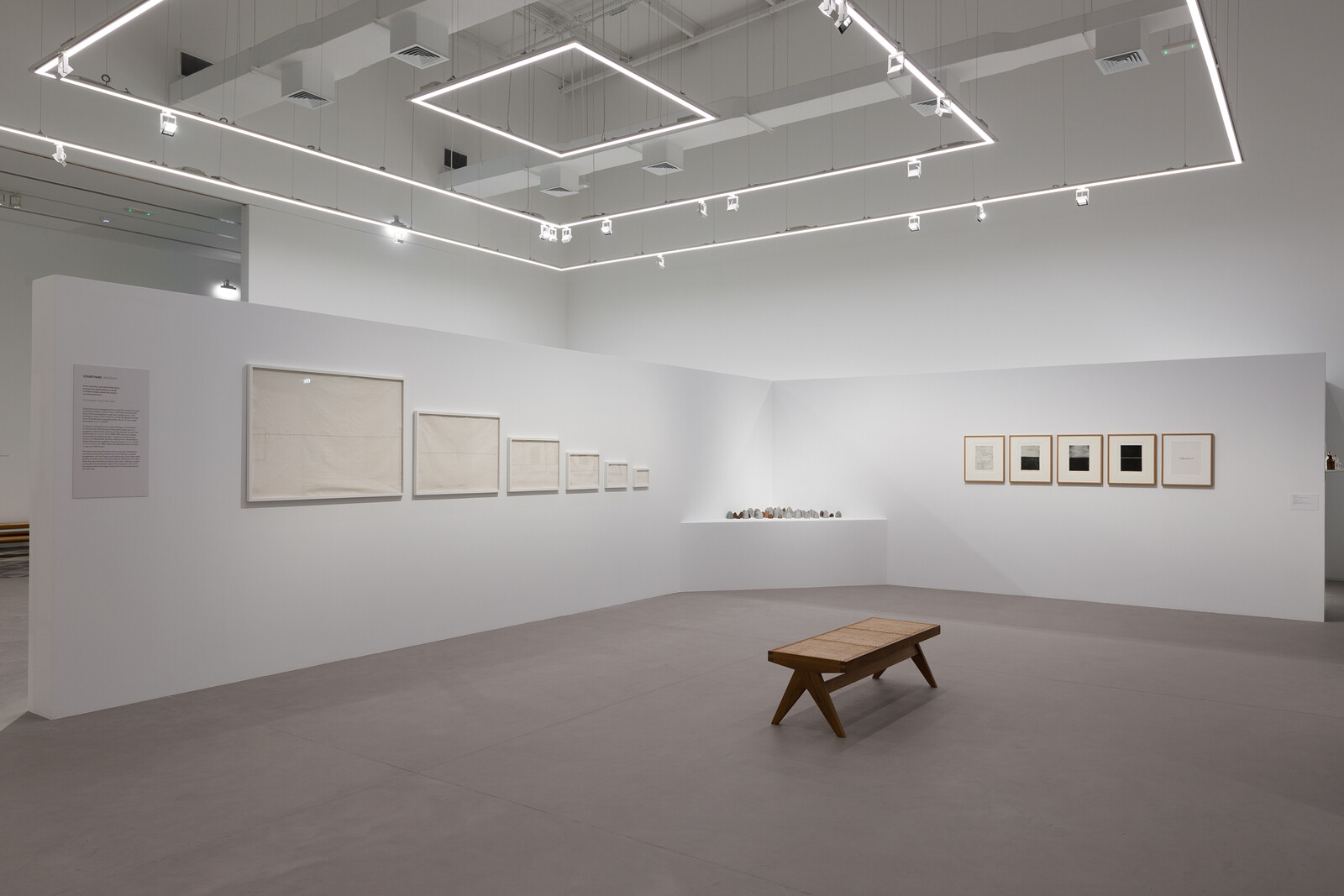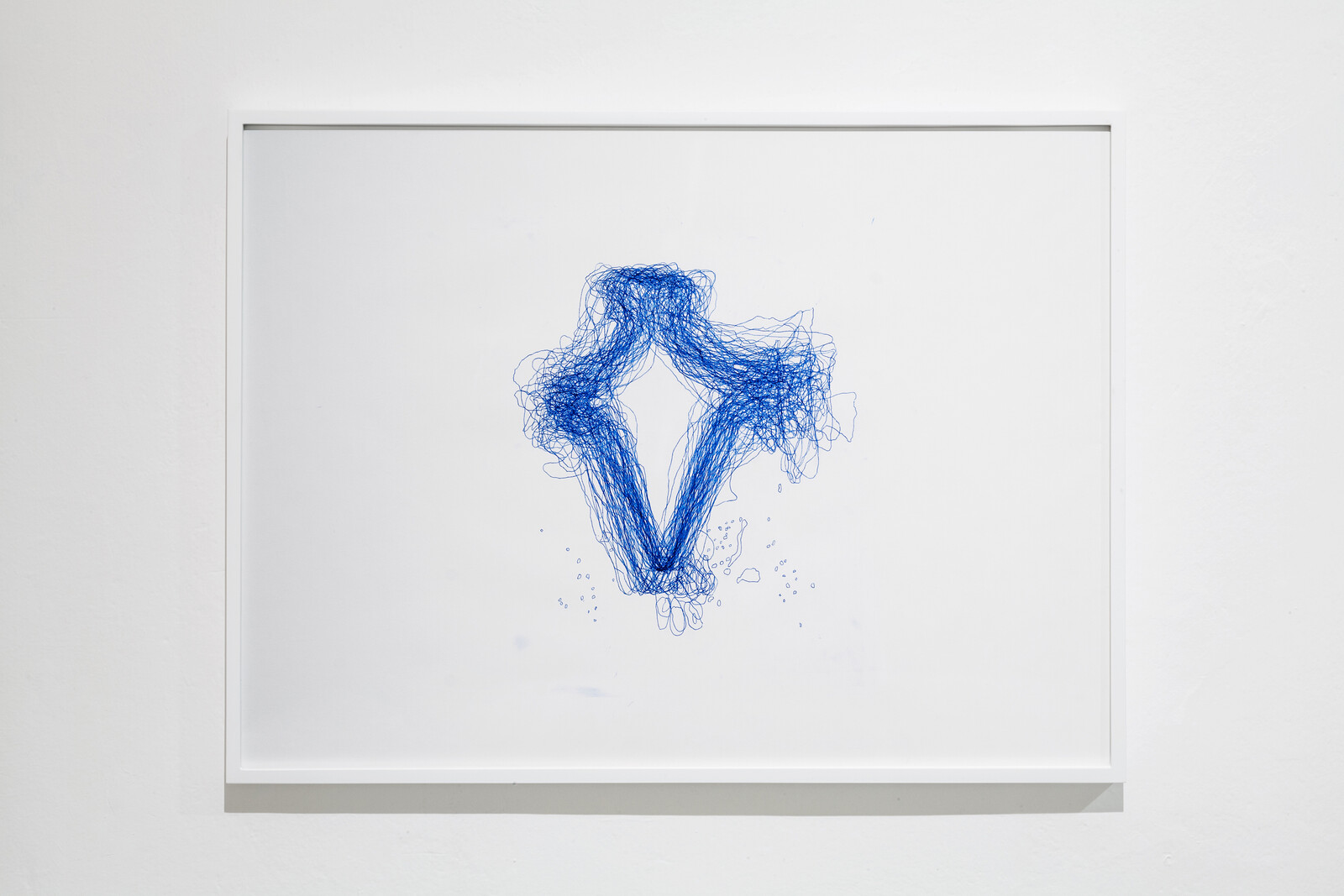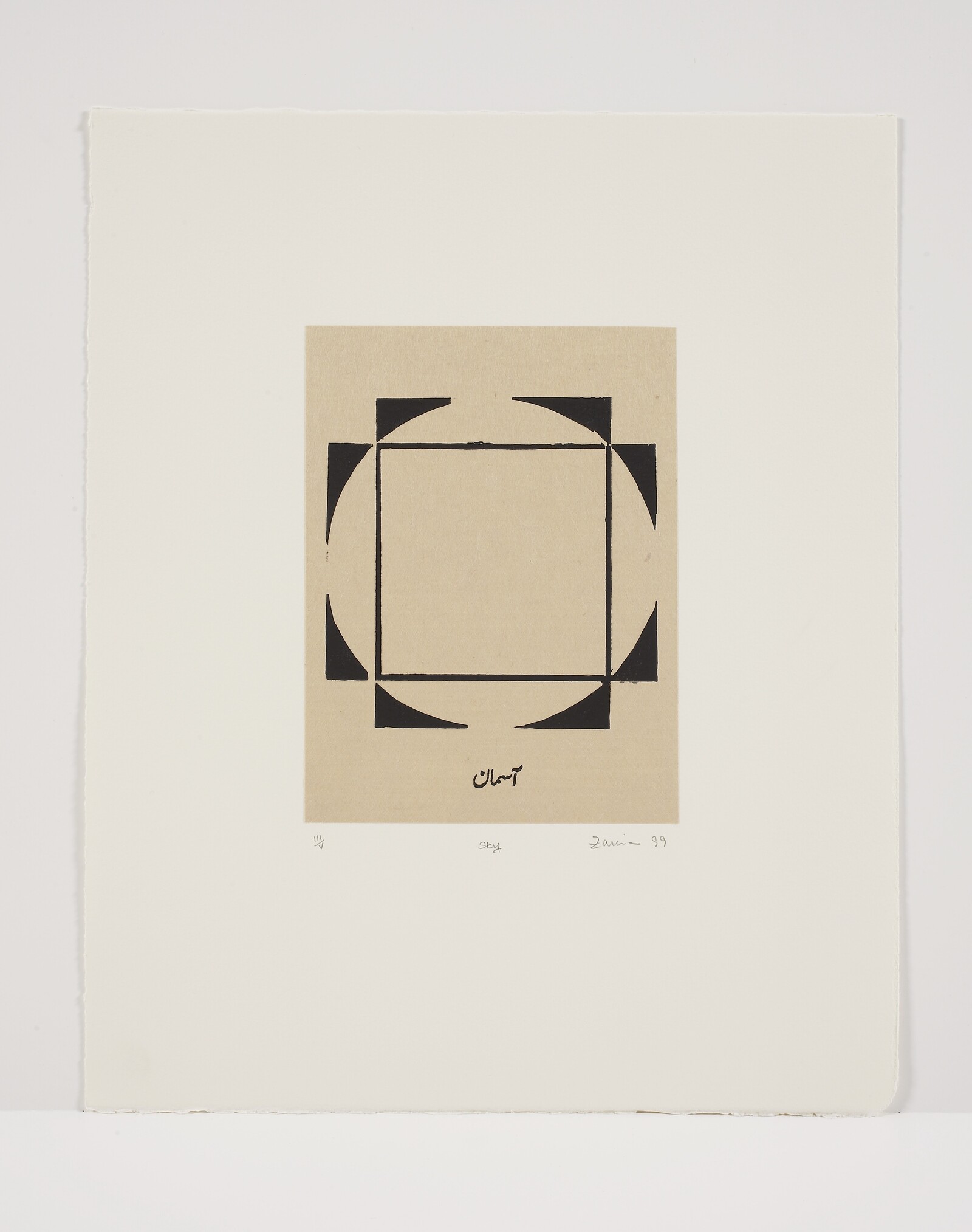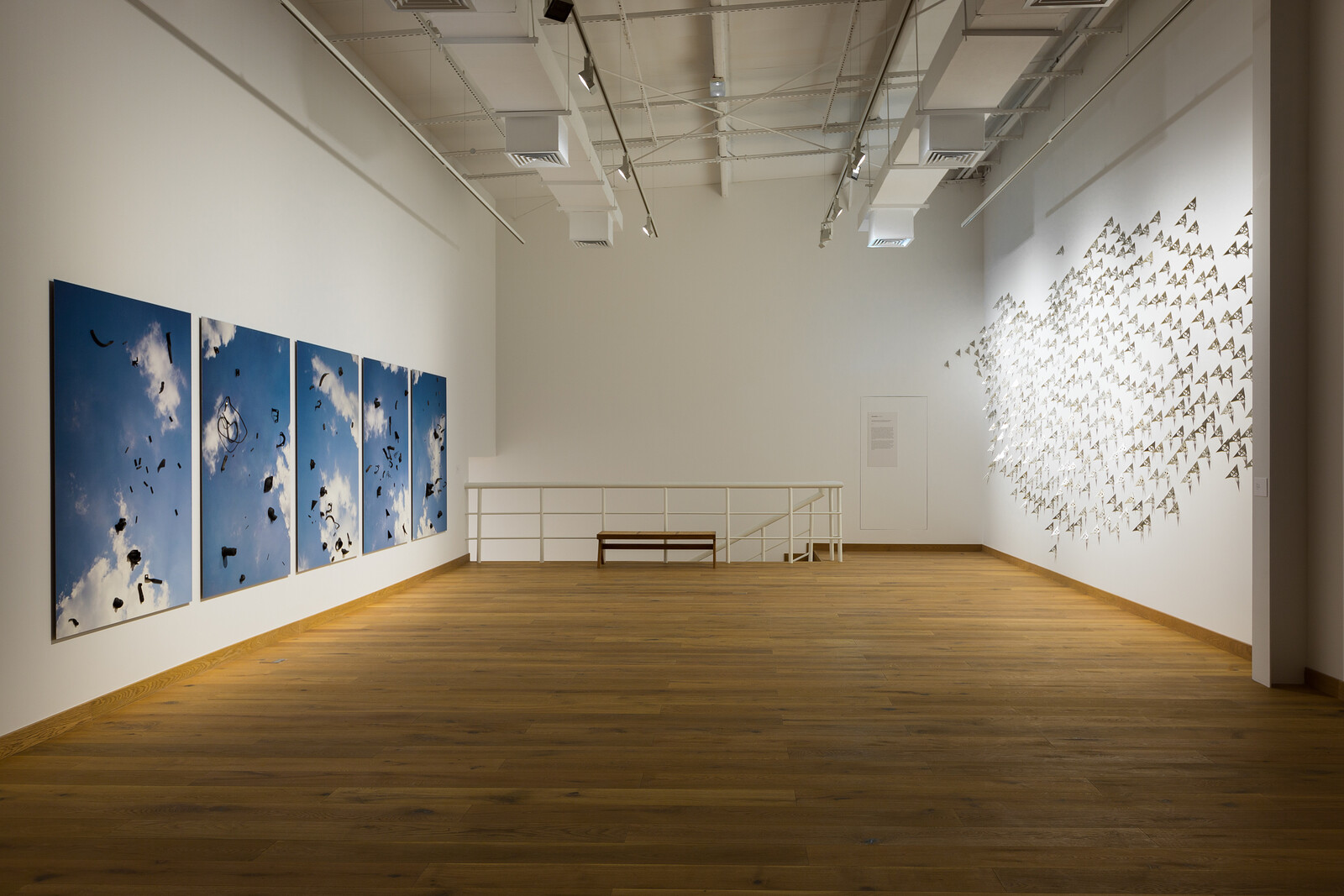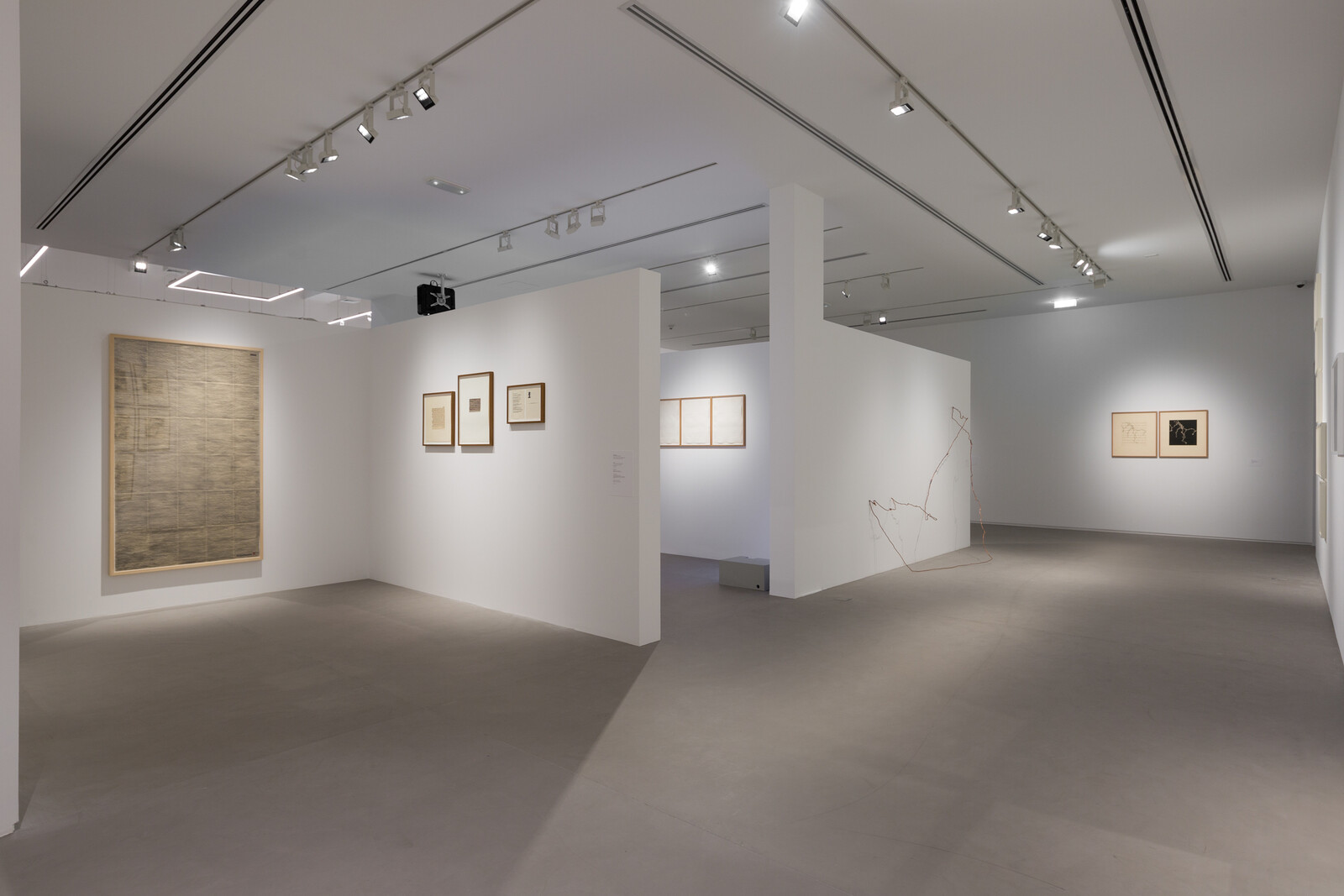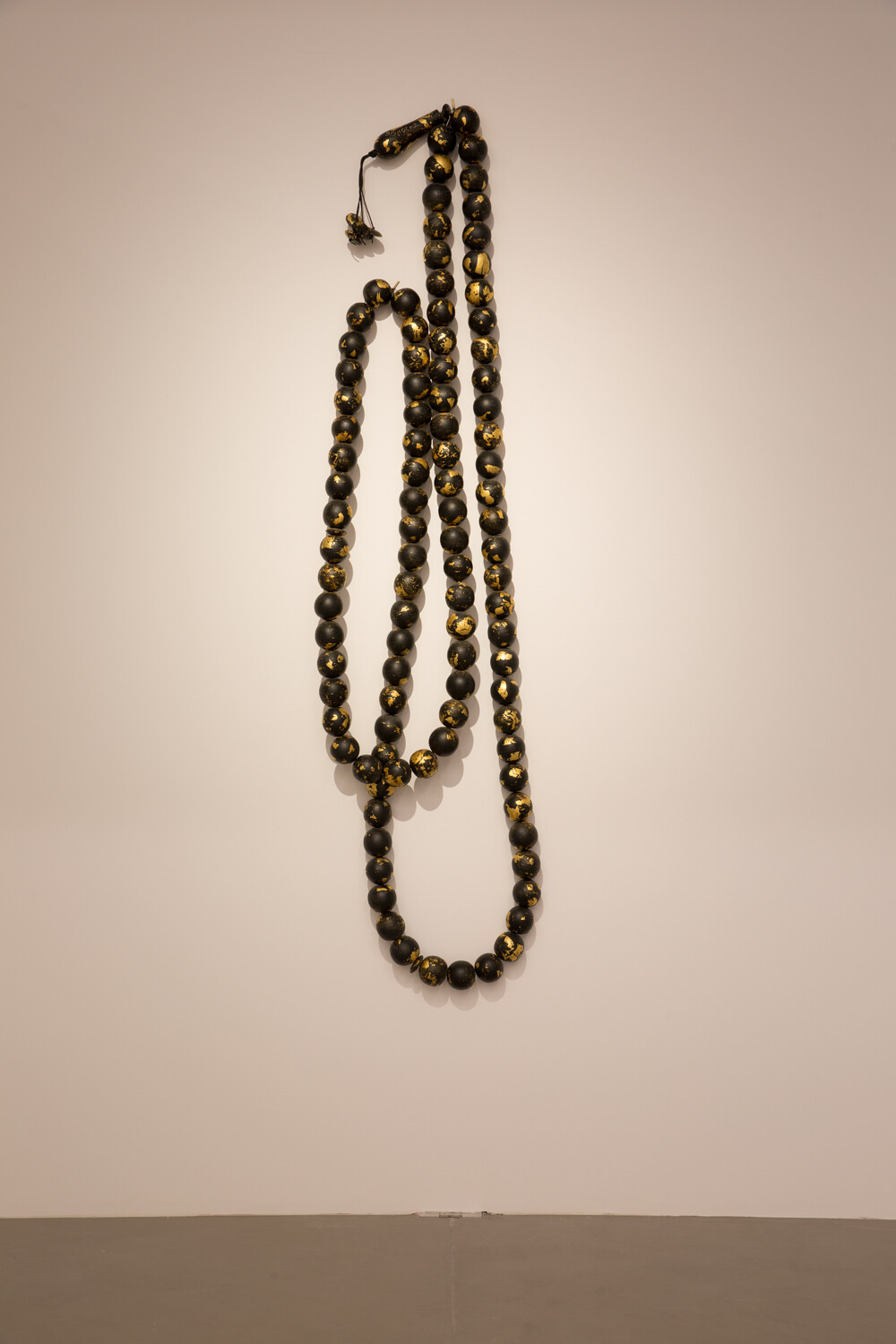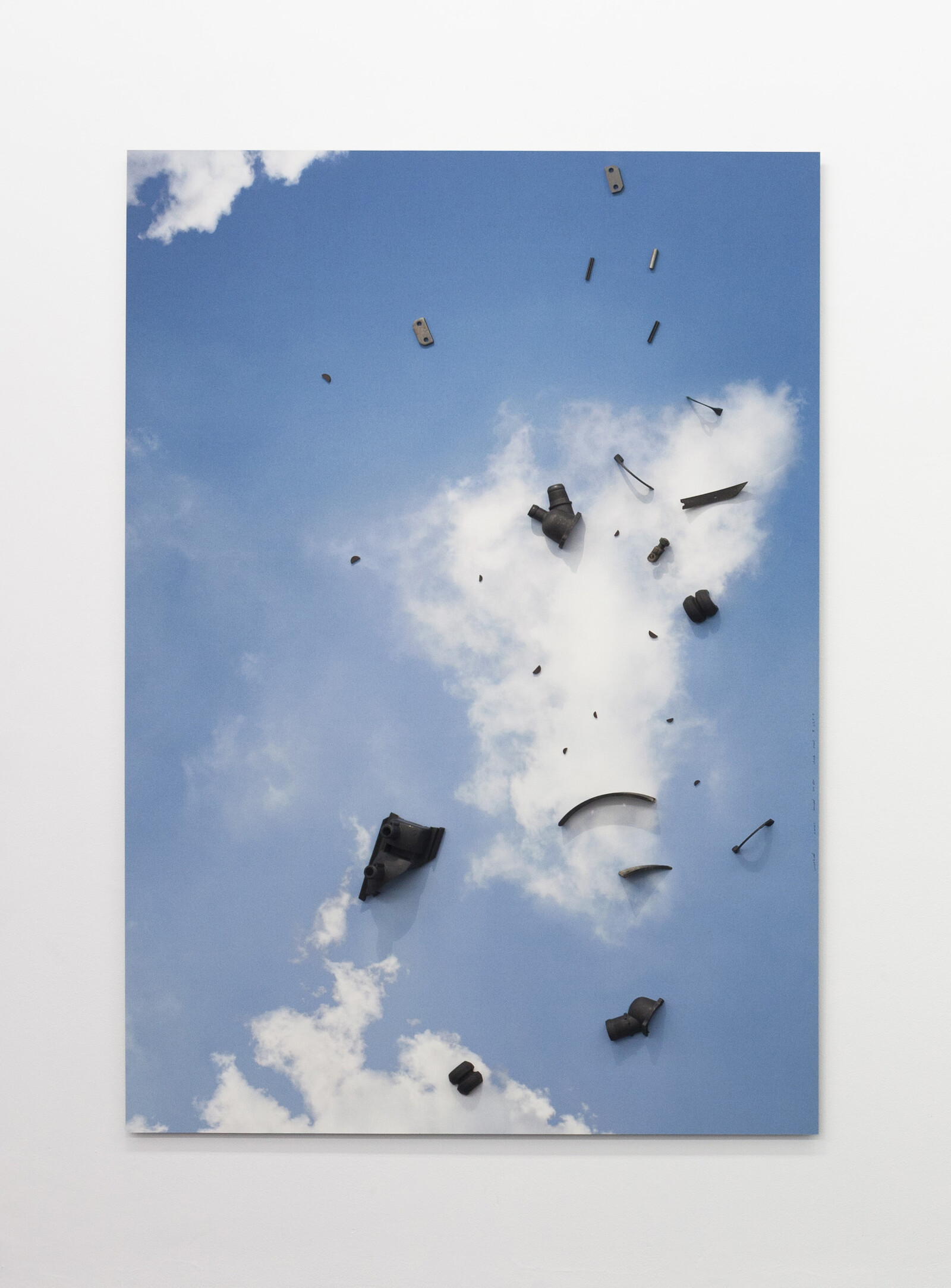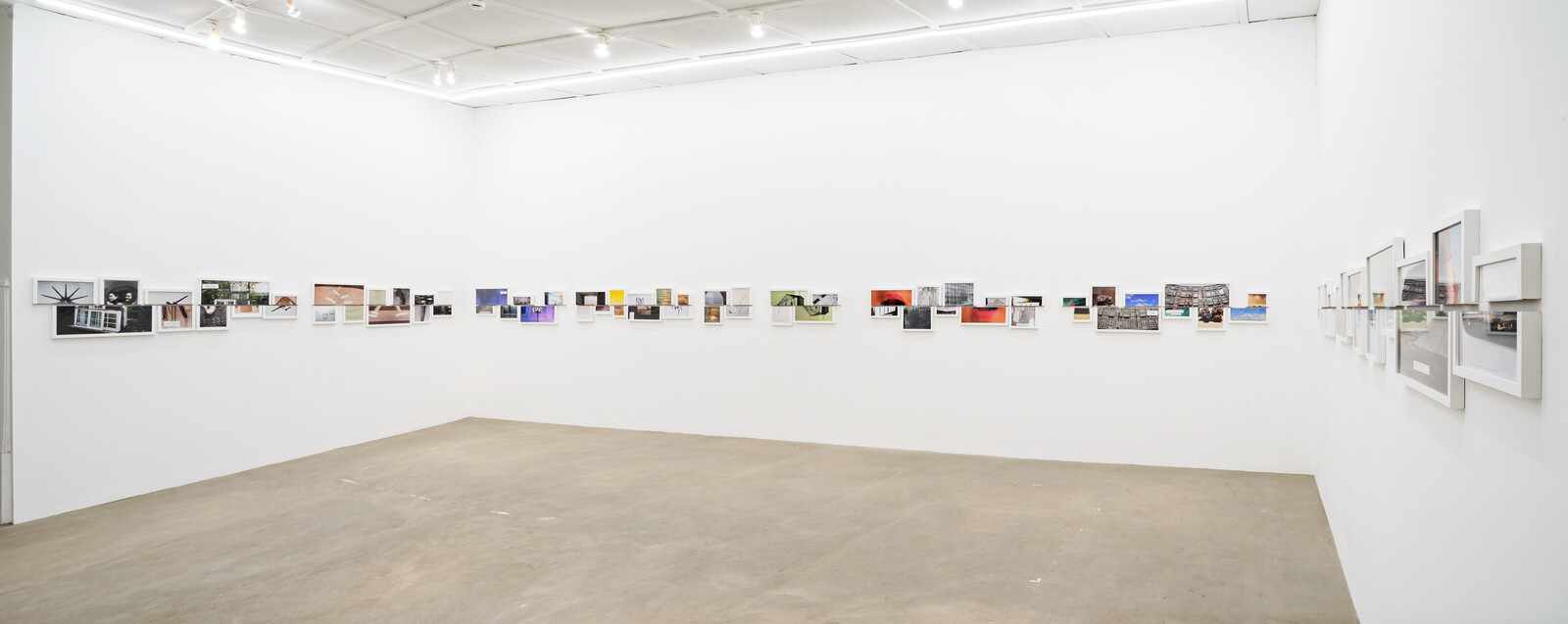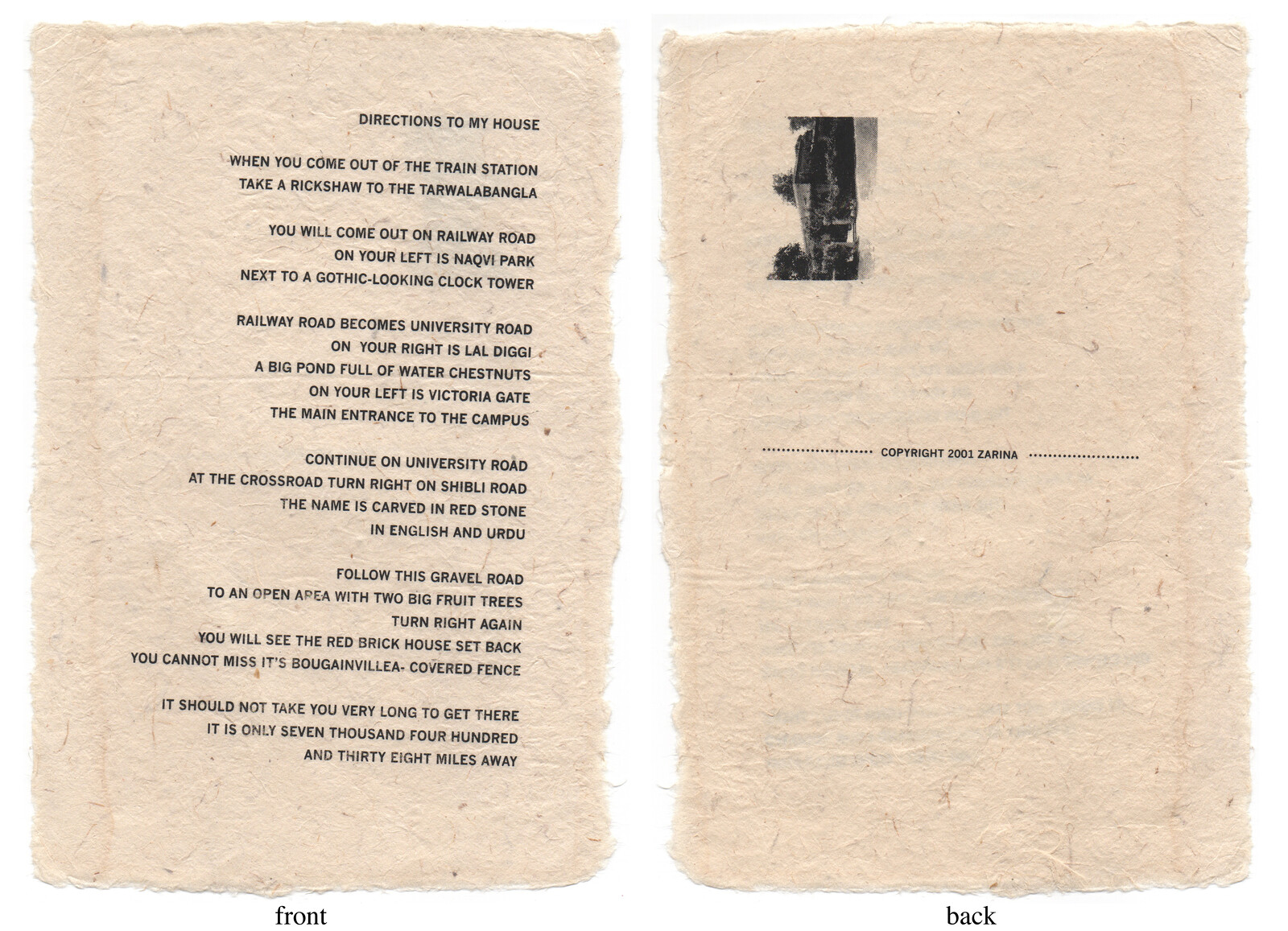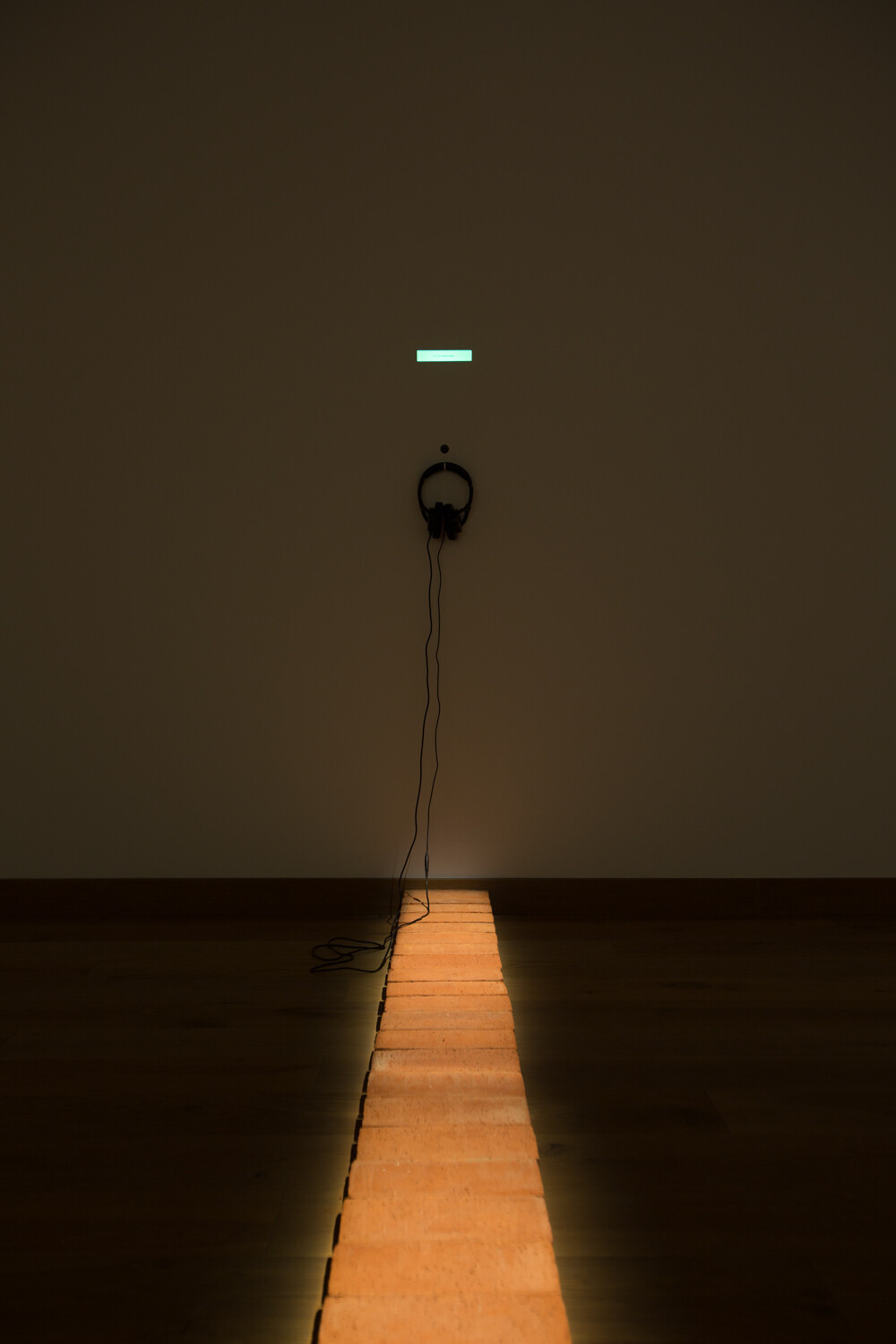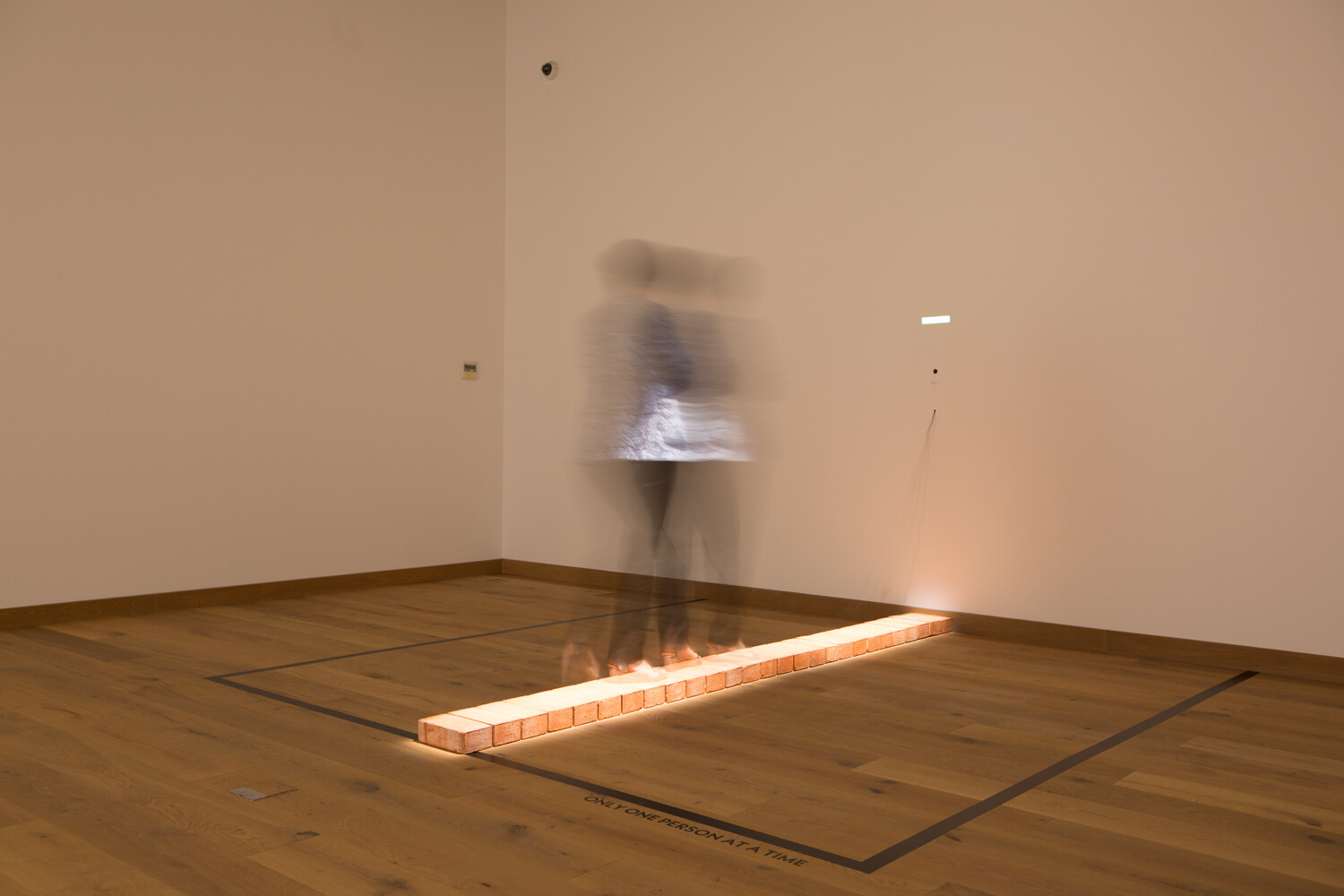The inaugural exhibition at the nonprofit Ishara Art Foundation—the newest addition to Dubai’s Alserkal Avenue, an art and culture hub housed in a former industrial compound—is built around an intergenerational dialogue between two Indian artists, Shilpa Gupta (b. 1976) and Zarina (b. 1937). Curated by artistic director Nada Raza, the show is a clear mission statement that sets the agenda for an artistic platform concerned with contemplating South Asia and the Gulf from a transnational perspective. Drawing on a wide array of each artist’s works, the exhibition allows for anecdotal as well as formal undercurrents to surface and resonate with each other.
Zarina’s “Home is a Foreign Place” (1999) is a double inauguration. Comprising a series of 36 woodcuts, the work sets the conceptual tone for the show and lends one of its motifs (Aasman [Sky]) to the foundation’s logo: a delicate, geometric pattern of rectangles, squares, and circles in perfect symmetry. In each of the woodcuts, processes of abstraction and translation feed into textual, visual, and numerical markers of how the artist relates her own life to ideas of home and belonging. Faasla [Distance] shows a straight line with “7438 miles” written above it—the distance between Aligarh in India, where Zarina was born, and Manhattan, where she has lived since the 1970s. Similarly, Ghar [Home], the first panel in the series, shows the floorplan of Zarina’s childhood home—or how she remembers it. Each of these woodcuts evidence a subtle engagement with the shape and accumulation of time, stretched between geometric fabulations, technical details, and selective memories of past experiences. Ghar also provides the schematic blueprint for the exhibition’s layout of temporary walls, suggesting that Gupta’s works are “housed” within Zarina’s—a nod to how different generations understand, imagine, and enact notions of home.
Hanging from a nearby wall, Zarina’s oversized Tasbih [Prayer Beads] (2011) embody ritual or spiritual temporalities as well as calibrated, weighty units of measured and discretized time. In Gupta’s Untitled (2014), displayed near it, watch hands set against a background of black felt resemble stars afloat in a dark sky: an abstract treatment of a technical device that addresses duration and distance. Connecting the artists’ works are the interrelated dynamics of belonging, time, and the experience of moving across scales—the terrestrial and the cosmic, the personal and political, the technical and the instinctive.
Gupta often explores spatiotemporal experience in the context of border conflicts and territorial disputes. In Unnoticed (2017), fragments of used car parts—the kind illicitly carried across the border between India and Bangladesh—are placed on photographs of a blue sky with fluffy clouds here and there, whose mundane but uninhibited movement evokes that of materials smuggled across borders on land. Gupta is engaged with an expanded notion of such borders, which are again and again redrawn between movement and capture, matter and abstraction, history and memory, experience and representation. For 100 Hand drawn maps of my country, India (2008–14), the artist overlaid blue line drawings by residents of India to reveal a shaky but accentuated pattern whose contours suggest the layered apparatus of national borders and the distortions of memory.
Collective memory is further addressed in Gupta’s Altered Inheritances – 100 (Last Name) Stories (2014), an installation comprising a series of framed photographs spliced in half, shuffled, and then reinstalled along the line of split, which runs continuously around the room. This set of images is syncopated and wildly associative, ranging from historical photographs to snapshots and scans of abstract drawings. Short texts accompanying the images tell of people who abandoned their last names after migrating to a new place. The abstract geometry of the line again acts as both a divider and a connector, framing a particular kind of alienation as a condition of possibility for identification and belonging.
Such a nuanced approach corresponds with the exhibition design, which invites the audience to pay attention to how the terms of distance and intimacy are laid out across the space. Gupta’s Speaking Wall (2009–10), the final work in the exhibition, comprises a narrow brick walkway that leads to a wall on which a small LCD screen and a set of headphones are mounted. The wall speaks of itself, of home and the outdoors, variously instructing viewers to move closer to and further away from the wall. The dimly lit, wobbly, and dramatic scenography of Speaking Wall renders ideas of division and closeness material and affective. Throughout this exhibition, the pairing of Gupta and Zarina weaves an evocative yet abstract narrative of how division and displacement are closely bound up with the terms of spatiotemporal belonging. Fitting the occasion of an intergenerational dialogue, “Altered Inheritances” traces lines of movement that cross paths and might reconvene again, always back home but never in the same place.
